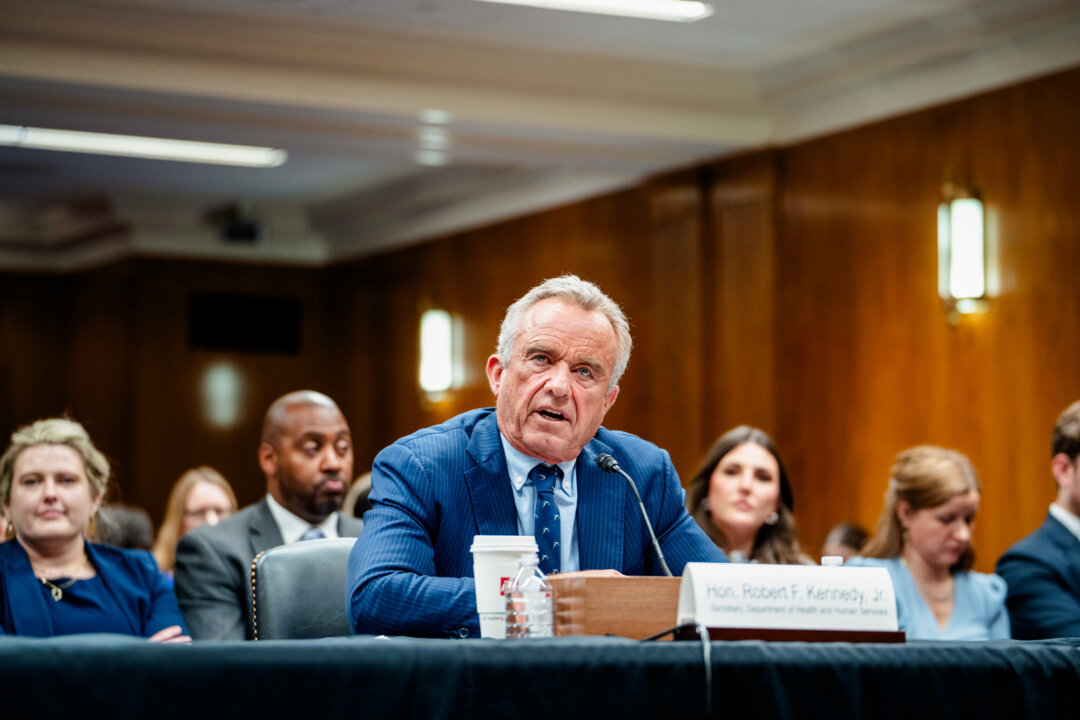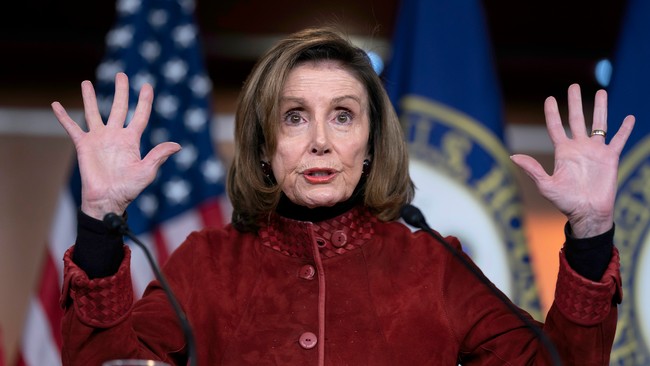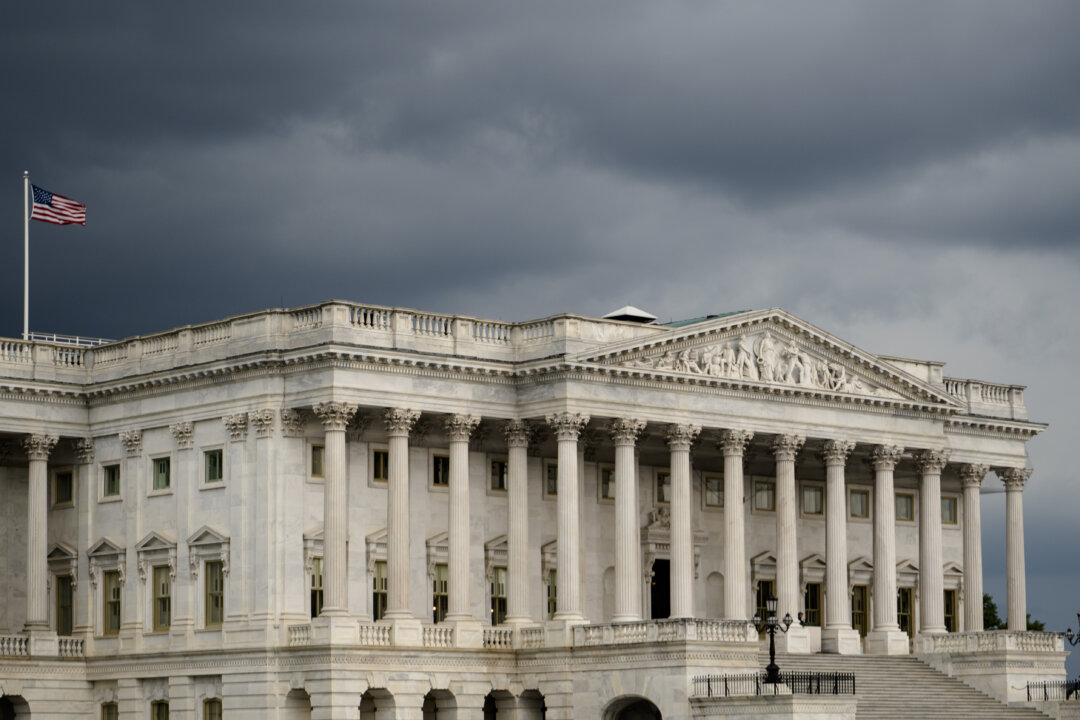President Donald Trump’s second term has offered no shortage of chaotic economic headlines, but in certain corners, his decision to fire the head of the Bureau of Labor Statistics has caused a particularly acute sense of dread.
The administration argues Commissioner Erika McEntarfer was removed for incompetence, but the most avid consumers of the agency’s data — top economists and key figures on Wall Street — worry it was because Trump did not like what that data said. After all, his decision came after the BLS reported that a disappointing number of jobs had been added in July and that the labor market was considerably weaker in May and June than it had previously estimated.
Trump says he will name a replacement as soon as this week, and the choice will be consequential not just for his own legacy but for the future of the economy.
Businesses use employment and inflation data from the BLS to help them make decisions around investment and hiring. JPMorgan Chase’s chief U.S. economist noted in a message to clients that there’s a $2 trillion market that depends on trust that the consumer price index is reliable. And the BLS’ work underpins the Federal Reserve’s interest rate decisions that shape the entire global economy.
To get a better sense of what the fallout might be for the central bank and others who rely on this data, I talked with David Wilcox, who spent years as head of the division at the Fed that does economic forecasting.
His immediate concern was how difficult it would be for McEntarfer’s yet-to-be-named replacement to build credibility, given fears that the Trump administration might try to take a stronger hand in the data’s presentation.
But Wilcox, who is now a senior fellow at the Peterson Institute for International Economics and director of U.S. economic research at Bloomberg Economics, also said it was imperative for people to be able to view BLS data as reliable — and that it would undermine the ability of policymakers like the Fed to guide the economy if they couldn’t.
“Let me put it this way: People make mistakes all the time driving the car. Now imagine that you blur the windshield,” he said. “There are going to be a lot more automobile accidents on the road with devastating consequences, and I think that's the situation here.”
This transcript has been edited for length and clarity.
When you were developing your forecasts and the materials that you used to brief the Fed’s rate-setting committee, what role did the data from the Bureau of Labor Statistics play in that?
Well, they produce an awful lot of the statistical products that we relied on as the foundation for our analysis and advice to the committee. [The jobs report] is the most timely and most comprehensive measure of the momentum in the economy.
The unemployment rate and the jobs numbers [of how many positions were added in the previous month] were critical in forming our assessment of how strong the economy was, what the forward momentum in the economy was, partly because they come out so quickly.
The other key release that is published by the BLS is the consumer price index that’s published about two to three weeks into the month following, and it is the basis for the inflation gauge that the [Fed] uses as its guidepost for monetary policy.
As it happens, the [Fed] doesn't directly use the consumer price index. They use a remixed version called the personal consumption expenditures price index, or PCE price index, but most of the raw material for the PCE price index is directly transported over from the consumer price index.
We did work hard to augment the government statistics with additional information that we developed, particularly over the course of the 2010s, but we firmly viewed those additions as complements to the government statistics, not as replacements for them. The very framework that we used for building our augmenting data was derived from official government statistical sources. It was the essential starting point for our work.
For people like you and other outside economists that dig really deeply into this data, is it possible for BLS to reach conclusions where nobody really knows where they came from? Or would that throw up red flags?
I think that would be difficult for two reasons.
One is first and foremost, the culture of the organizations — and when I use the plural, I mean the three key economic statistics agencies: BLS, BEA [the Bureau of Economic Analysis] and the Census Bureau. All three of those agencies are deeply imbued with the ethic of integrity, impartiality, professionalism. And so the reliability of the data depend on much more than just the person who inhabits the commissioner’s office. It really is baked deeply into the culture of the organization, all the way up and down the rank and file.
It is a complex process. There’s no question about it. There are a lot of aspects of that process that, by design and necessarily, are not visible to an outsider. And the reason for that is obvious and completely understandable, and that is that unfathomable amounts of wealth depend on the integrity of the development process behind the release of these statistics. Wall Street traders are literally hovering over their workstations on the first Friday of the month, looking to see exactly what the signal is from the latest employment report and the same holds for the consumer price index.
Let’s take the [jobs] estimates as a sort of case study, but the principles there apply quite broadly. BLS starts by drawing a sample, I believe it’s about 120,000 establishments.
What’s not visible to outsiders on a real-time basis is the responses from all those individual companies. And that’s absolutely as it has to be. That’s proprietary information. The companies provide that information precisely on the understanding that it won't be used for other-than-statistical purposes. That would be of tremendous commercial value to their competitors if their competitors knew that Company X had added 5 percent to their workforce this month.
That said, once the companies have reported the process of translating that into a final number, it is quite mechanical. It’s intricate, but it’s algorithmic. There isn’t a great deal of judgment that’s involved in assembling the numbers.
It would be a gross oversimplification, I’m sure, to say that it’s just a matter of entering fields into a spreadsheet and then punching the button and seeing what the spreadsheet delivers as an answer, but that’s not a bad basis for a first level of understanding about what’s going on.
I guess the last thing I would say is that the process of assembling these estimates is quite decentralized by design. The commissioner of BLS is not brought into the process until the numbers have been finalized, so the accusation that Erika McEntarfer might have rigged the numbers is just simply detached from the reality of the way that the bureau conducts its business.
Do you think there’s already been damage to the agency’s credibility, or does it depend on what happens next?
A mix of both. I think some of the damage that has already happened pertains to the predicament of the next person who will hold the job of being commissioner of the BLS.
There will be persistent concern about whether that person was installed in order to do the president’s bidding rather than in order to fulfill the mission of the BLS to deliver the best estimates of the facts on the ground as best as they can be discerned in a chaotic world.
Going back to something we were discussing a minute ago — if there is now political influence being introduced into the process, would people outside of the agency be able to tell?
Well, I want to reiterate that I think it would be difficult to introduce political influence in the monthly numbers.
I suppose if there was a thorough bloodletting at the agency and career professionals en masse were dismissed, were fired — if they were replaced by loyalists willing to do the bidding of the president and the administration — in that case, then yes there would be a risk of political manipulation of the agency. I think we would know about it, or we would be put on high alert because of the mass resignation that I expect would ensue or the mass firing that might be enforced on the current workforce of the agency.
That said, while there would be some degree of embellishment that would be so flagrantly obvious to outsiders as to smell of political manipulation, it’s worrisomely the case that a little shading, here and there, might be difficult to detect.
One way of putting some empirical backing — putting some beef — behind that statement I just made is that at the Federal Reserve board, we established a relationship with ADP, the payroll processing company, and they gave us access to anonymized versions of their proprietary client level information, the very same information that they have provided to an outside vendor for many years for purposes of constructing the estimate that they release two days before the official BLS employment release.
And at times the outside vendor that ADP worked with generated a monthly number that was quite different from the one that we generated at the Federal Reserve. Now, that’s not to say that ours was the truth or the right answer. But it is to say that two groups of impartial professional statisticians could arrive at surprisingly different conclusions. So if there was a much more pervasive effort to undermine the ranks of the BLS or the other statistics agencies, I think it would be potentially quite difficult to detect from the outside.
But I want to underscore, we’re not there yet on the basis of the commissioner having been fired. There is an organization of roughly 2,000 people who are dedicated to the mission of the BLS as a nonpartisan, data-oriented, completely analytical operation of the government.
It sounds like for the moment you still have some optimism.
Well, I have limited optimism. I’m extremely worried about the future of the statistical system. Let me give you one stark fact to underscore just how concerned I am. The administration proposed in their budget for fiscal year 2026 an 8 percent nominal cut to the spending amount that’s authorized for the BLS and an 8 percent reduction in their authorized [full-time employees].
That comes on top of a period of probably 15 years of budgetary starvation for the statistical agencies. They are not in a position to sustain that kind of cut. An 8 percent reduction at this stage, given their emaciated state now, would be I think nothing short of catastrophic.
You’ve seen already symptoms of the intensity of the budget pressure that BLS is under. You’ve seen it in the fact that the BLS is now collecting prices from fewer cities than used to be the case.
And the reason for that is the hiring freeze and the budgetary restrictions that they’re operating under. And logic suggests that has to adversely affect the accuracy of the consumer price index.
If for whatever reason the BLS data was no longer available to the public, what would the Fed do? What would Wall Street do? What are their alternatives for understanding what is happening in the economy?
You’re asking me to contemplate the nuclear scenario. The BLS ceases to exist, is that what you're asking?
Well, or people no longer see its data as reliable.
The information foundation for all kinds of decision-making would be significantly damaged. There is a bunch of sort of optimistic talk of that, gosh, with the emergence of big data from so many sources that it’s possible to construct alternative indicators and we could get along. But what isn’t widely appreciated is that the value of those alternative indicators depends greatly on being able to rely on the outputs of the BEA, BLS and Census Bureau as the starting point, the agreed-upon foundation from which the alternative indicators will be built.
Economic policymaking, monetary policymaking would continue. The quality of decisions that would be feasible to make under those circumstances would be badly damaged. Monetary policy is hard enough as it is, with statistics that are widely agreed to be reliable and the best possible professional estimates, given the resources available to the agencies.
Monetary policy would become much more difficult to execute in real time in the absence of estimates about what the facts are on the ground. What kind of environment is the Federal Reserve operating in? Where does the economy stand relative to the objectives given to the Fed by the Congress, namely, full employment and price stability?
Let me put it this way: People make mistakes all the time driving the car. Now imagine that you blur the windshield. There are going to be a lot more automobile accidents on the road with devastating consequences, and I think that's the situation here.
.png)













 English (US)
English (US)